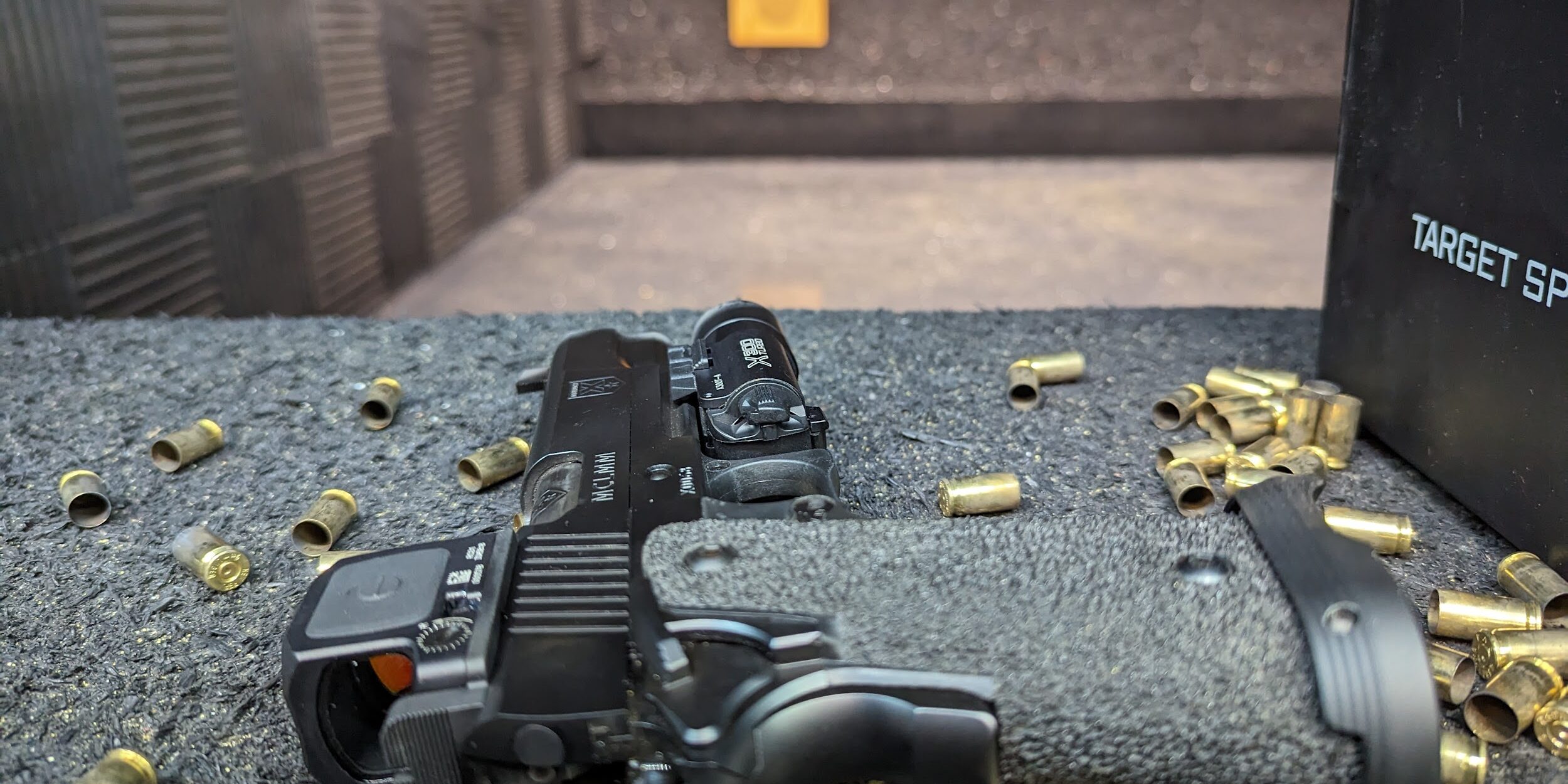[REVIEW] Trijicon RCR: One Year Later
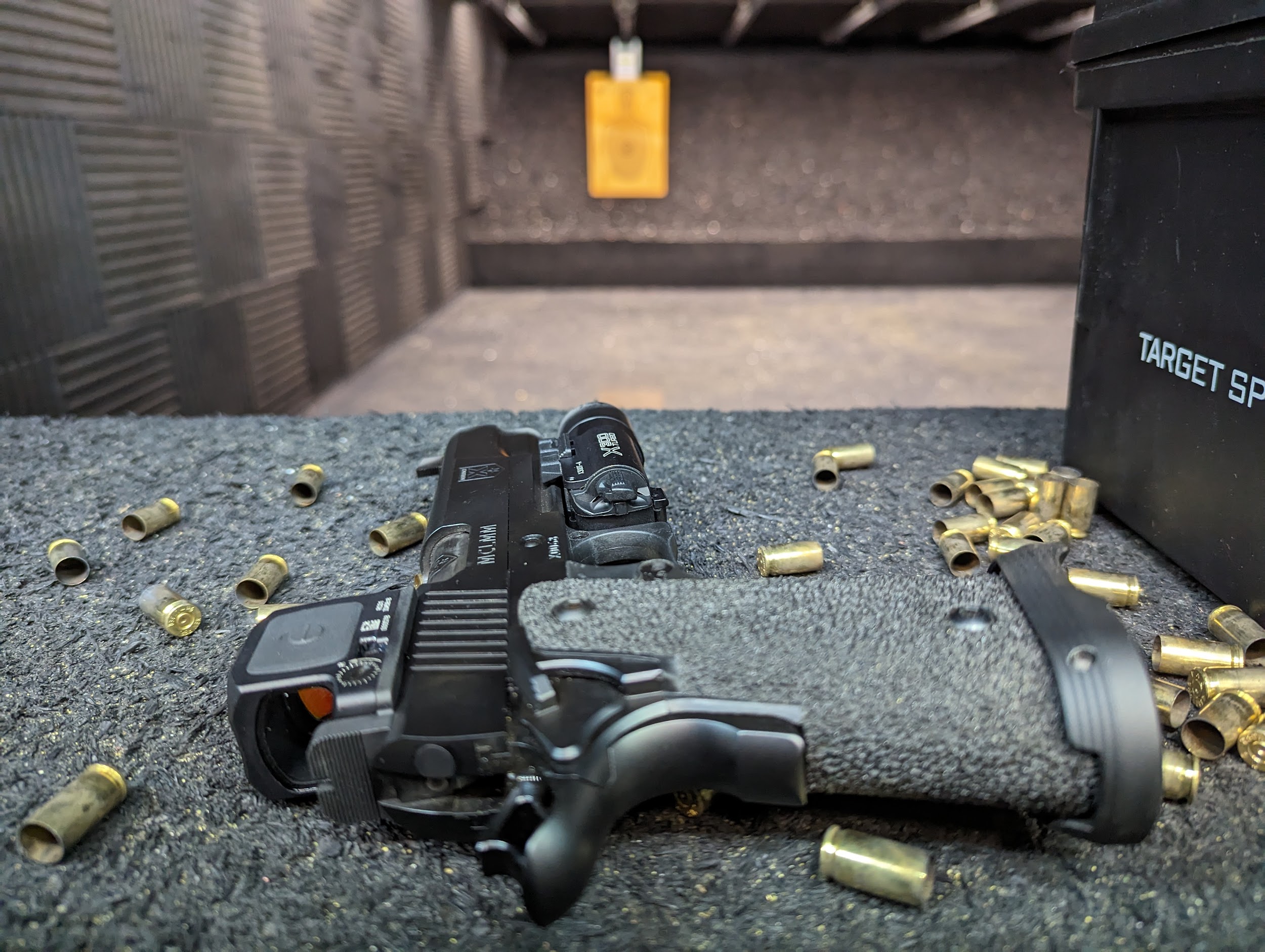
First impressions, findings, and a look inside the product development process over at Trijicon.
It’s been exactly one year since I received my Trijicon RCR. When I got it, I mounted it to my Accuracy X Gunfighter 2011 using one of their RMR plates, and it has remained there since. In that time, between testing both the RCR and my initial break in/test run of the Gunfighter plus any training and practice I used that pistol for (out of a modified ACRO sized Safariland holster via RDR Gear, see below), I figure I’ve got… at least 2000 rounds on the optic by this point. Granted, this is an approximate figure since I didn’t keep an exact round count, and I’m adding rounds fired in class on top of the Gunfighter’s round count (closer to 3000, whereby I had started shooting the Gunfighter before I received the RCR), either way it’s been a decent few of cases’ worth.
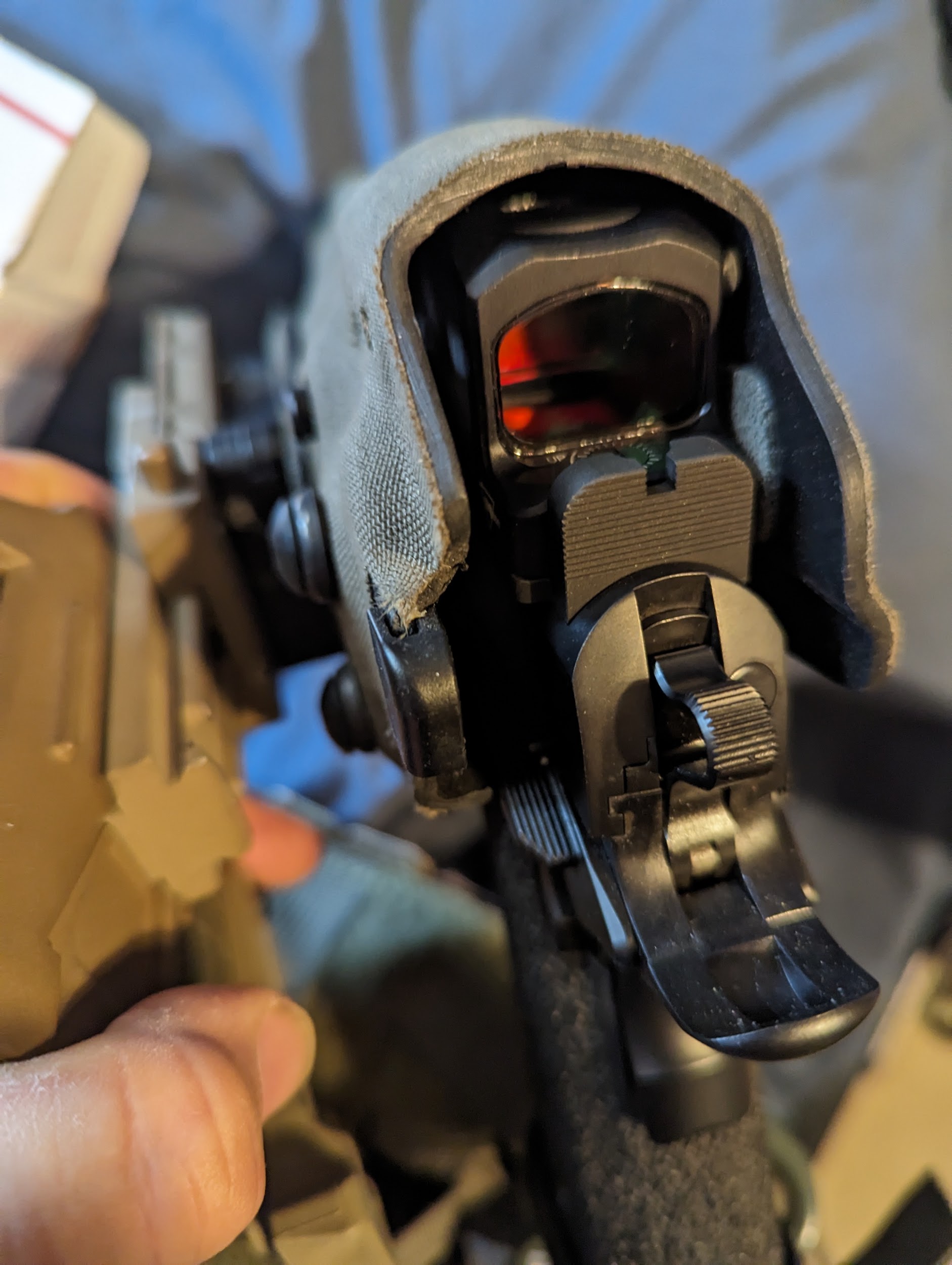
I originally testified when I first got the thing, as far as closed emitter MRDS optics go, the RCR is… boring. But not in a bad way; everything about it is simple, albeit reliable. It’s easy to mount, using a unique and secure method that retains the ubiquitous RMR mounting pattern. You aim with it, and… surprise, it’s a 3.25MOA red dot in a box. Nothing out of the ordinary if you’re already familiar with the Aimpoint ACRO or Steiner MPS. The window is roughly 4/5 the height of the ACRO P-2’s and just as wide; about the same as the RMR’s window size to my eye, with a comparable amount of blue reflective tint coating relative to the RMR, SRO, RMR-HD, and Aimpoint ACRO.
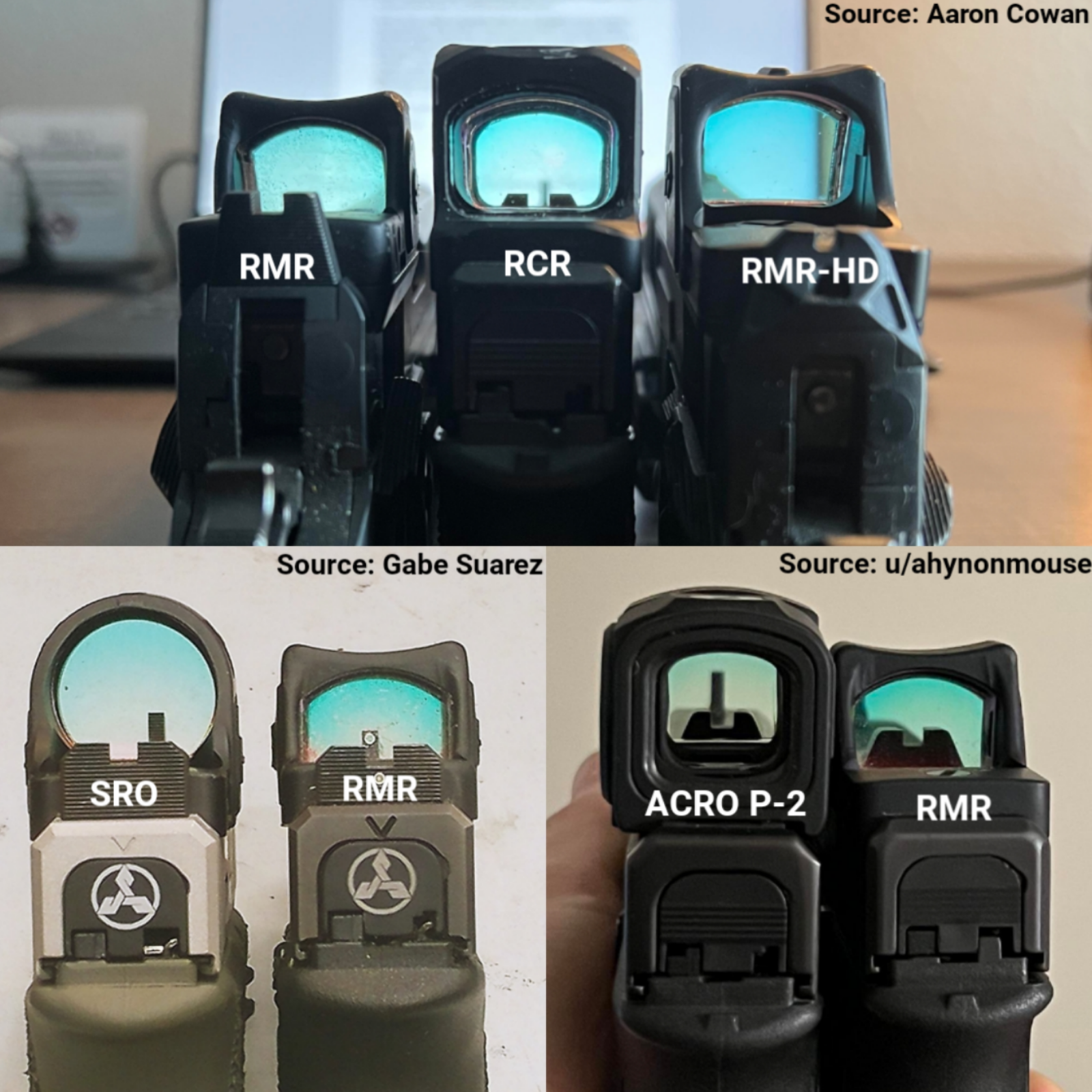
Windage and elevation clicks are both tactile and audible. Controls are the same as the RMR: + for brighter on the left, – for dimmer on the right, with similar programming. This time however, the buttons are much bigger; an added bonus when working with gloves and adjusting dot brightness on the fly.
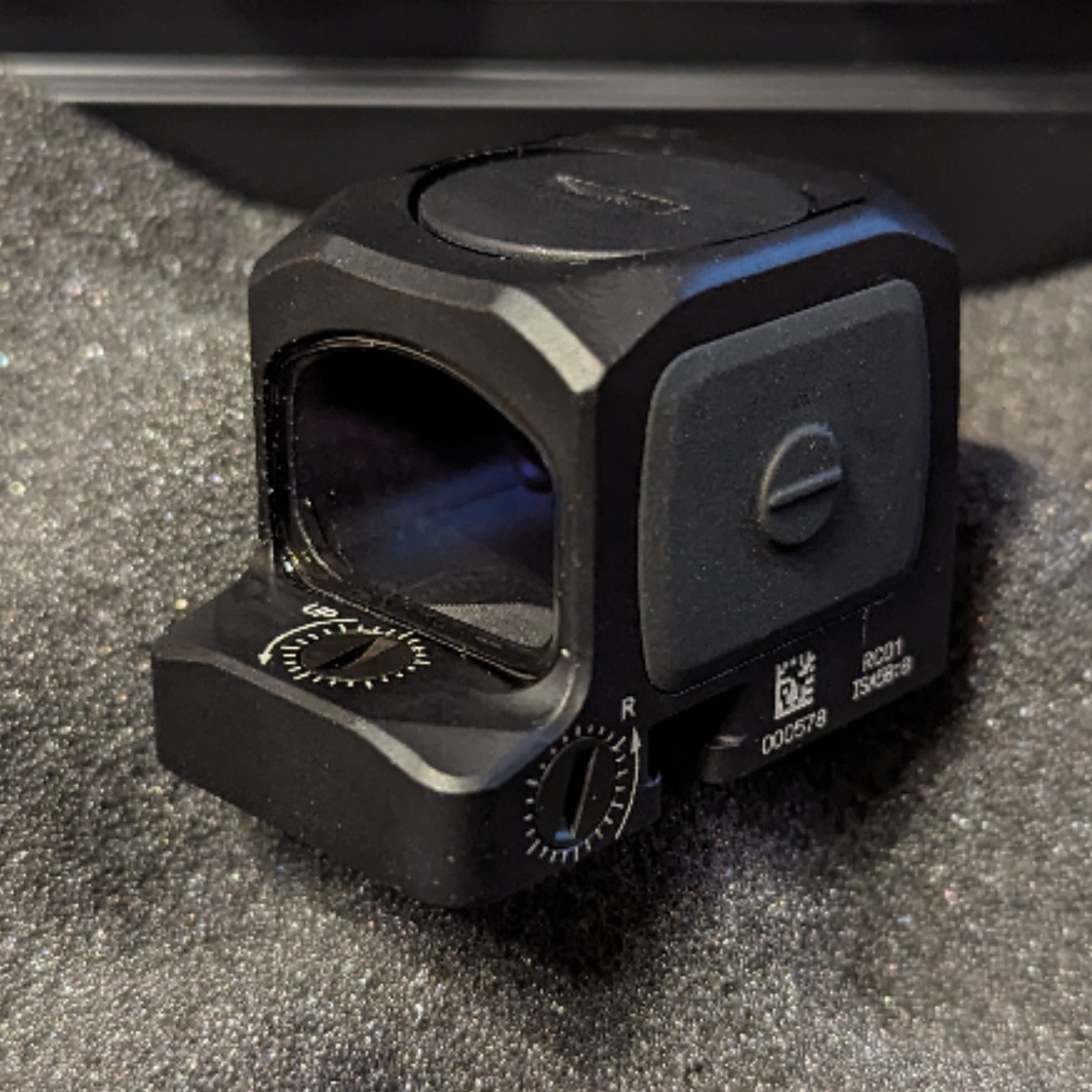

The mounting method is less intimidating than it looks: poke an allen key (like the one that comes with the optic) through the right-most hole in the capstan screw head, and rotate the screw to your left to facilitate the righty-tighty twist (the reverse being true for loosening the screws). The RCR comes with a torquing visual aid: When you get the screws hand tight, torque from the right-most dash to the left-most dash, and that’s it, you’re done. As far as three dimensional solutions go, it’s well thought out in the sense that anyone with an RMR or SRO can switch to an RCR without changing the slide itself, be it milled or utilizing a plate system.
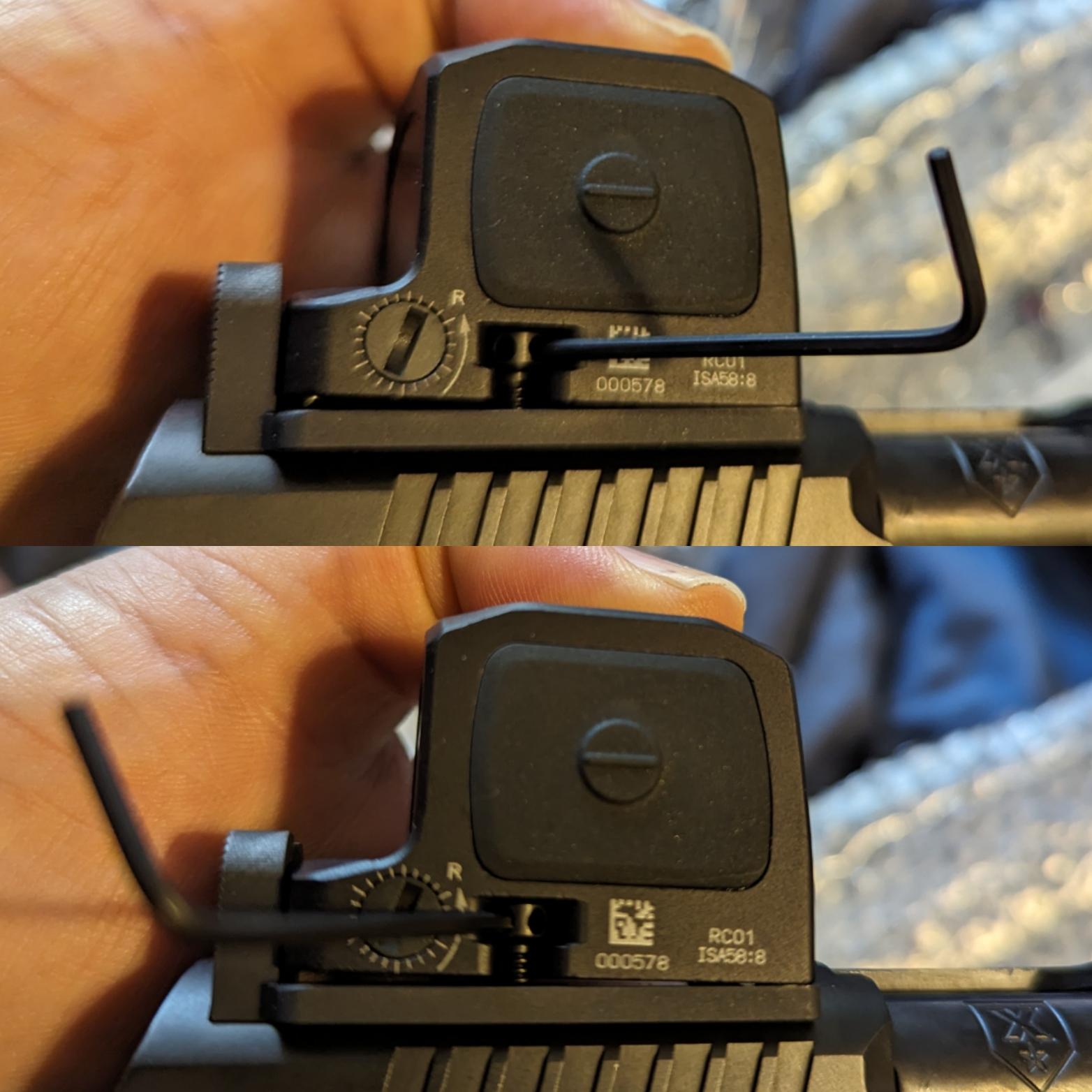
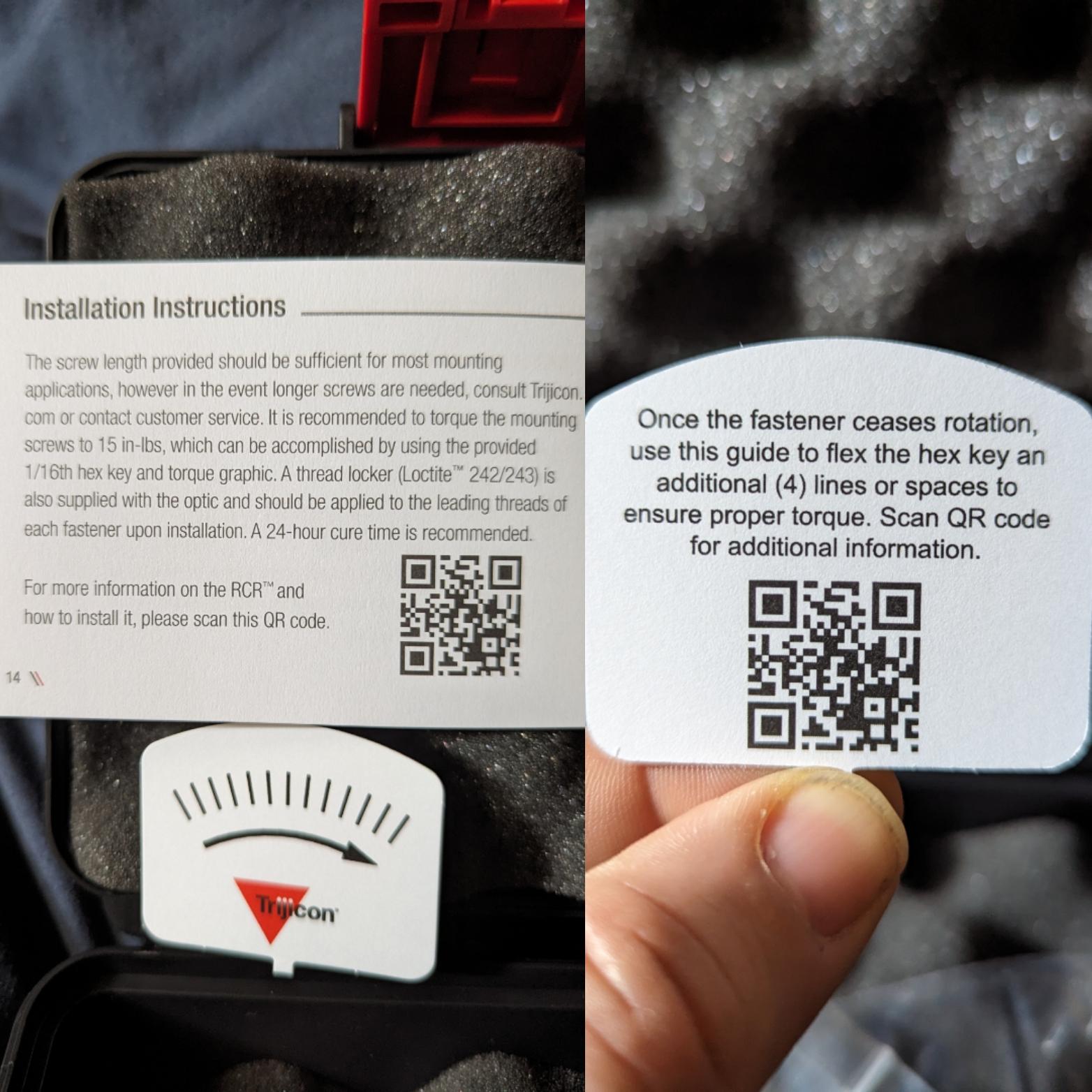
Having installed mine a year ago, I don’t remember if I used loctite on the screws or not. I probably did, but honestly it doesn’t matter; after thousands of rounds of recoil and G-force of slide cycling under fire, and racking the slide via using the optic as a support hand stop, my RCR’s screws have never loosened or sheared. I’ve checked it after every range session to ensure it’s still tight to the slide, and it has remained so.
In addition, I’ve yet to change the top loading CR2032 battery; with a published service life of six (6) years on setting 5/10, it’s comparable to the Aimpoint battery life we’ve become accustomed to as a standard. I don’t anticipate I’ll have to change the battery for some years yet, but don’t let that stop you from doing it every year on your birthday if that’s your established ritual
I’ve never performed any drop testing with my RCR; I leave that sort of thing to Aaron. I have however used the RCR equipped Gunfighter 2011 at the local fluorescent-lit indoor range, and outside both in bright daylight and darkness under night vision. In either setting, the RCR never left me wanting, not on paper, on steel, in the sun, in the dark, on or off the clock; boring reliable, as I said earlier. Kind of hard to hype it up beyond that without being disingenuous, honestly.
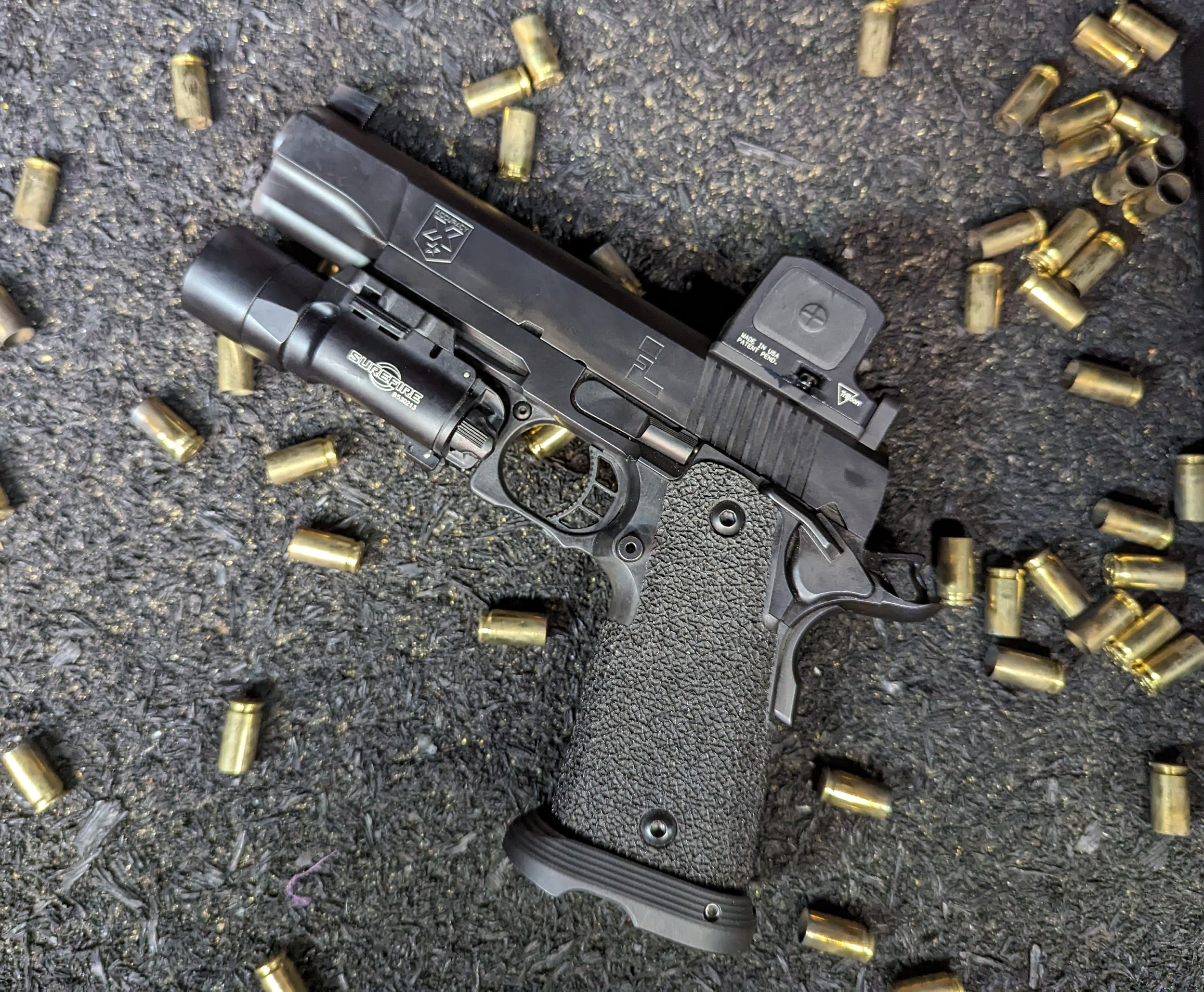
So, now for the backstory…

In February of 2022 a friend of mine with an LE background who functions as a consultant in the industry contacted me and asked if I wanted to participate in a product evaluation and development initiative for Trijicon; he had been asked to get LEOs from all over for the focus group, so he thought to ask me while he was making his calls.
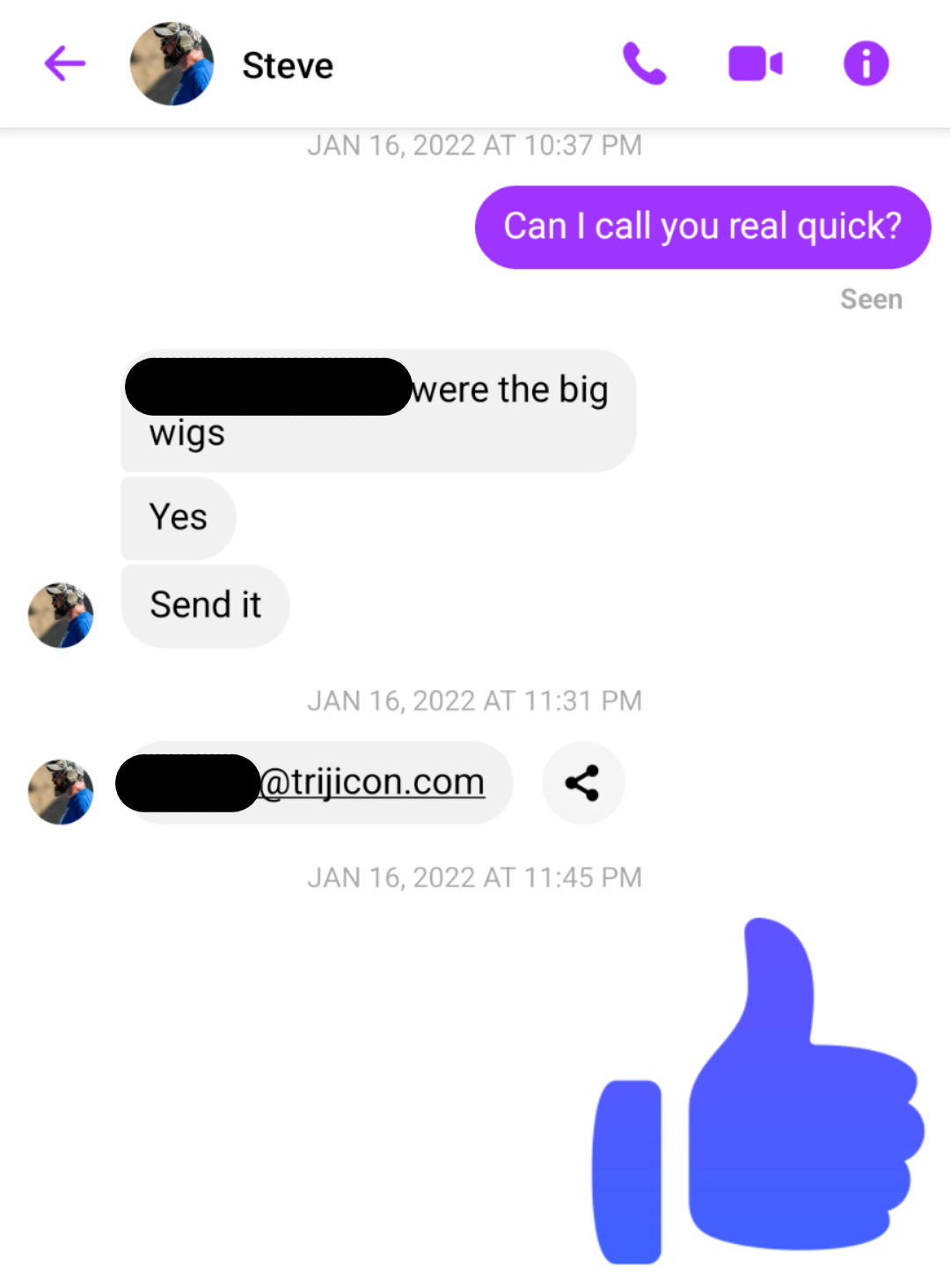
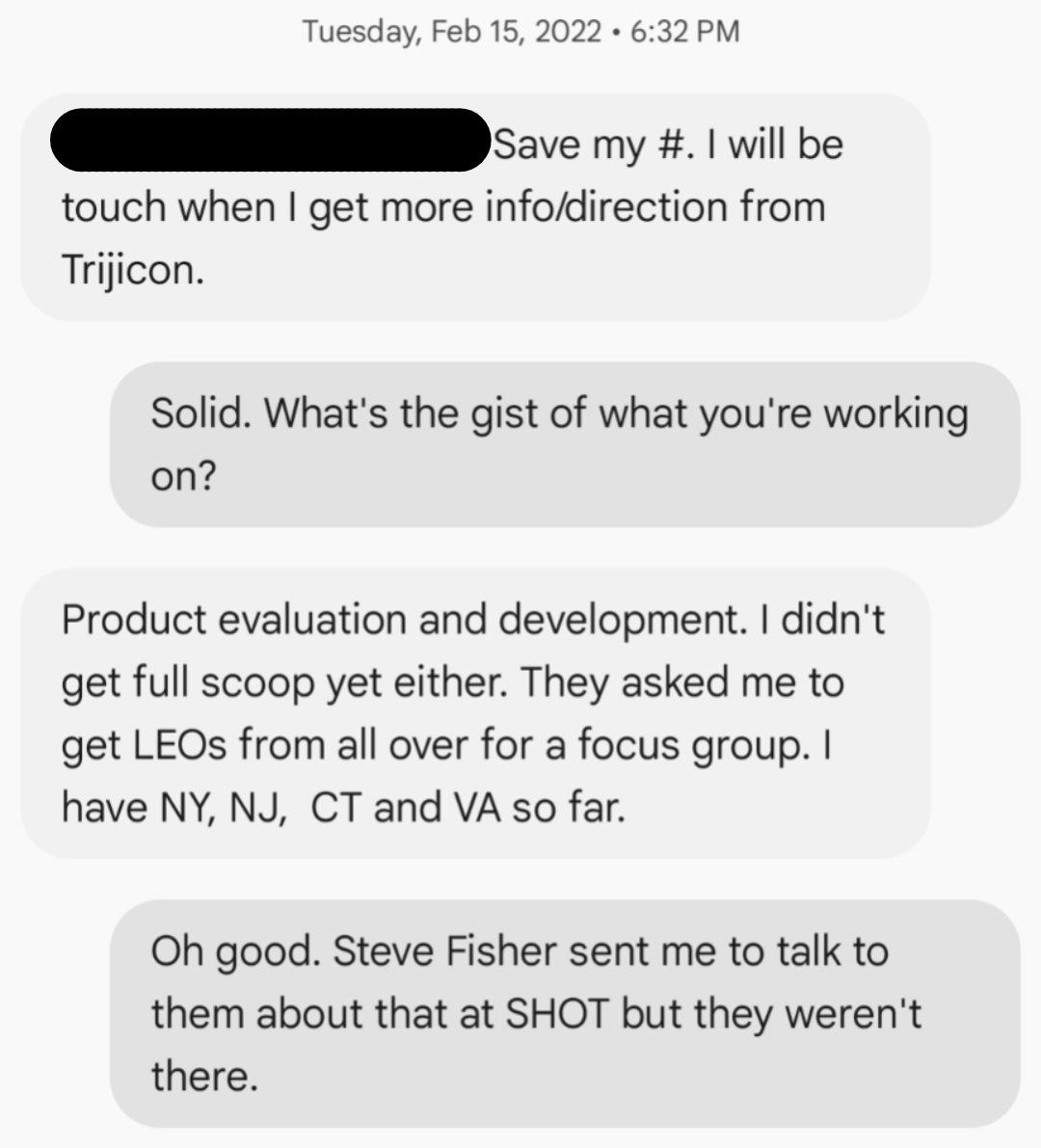
Once I checked my schedule with work, I RSVPed in the affirmative that I would go. It was an enthusiastic second chance, of sorts: shortly before SHOT 2022, Steve Fisher told me to go to Trijicon’s booth and attempt to communicate some ideas for product development to their executives. We (collectively, among those in the industry) had been noticing quite a few people griping about how they felt Trijicon wasn’t listening to their feedback; why not take the opportunity that SHOT Show provides to go straight to the decision makers and make a few suggestions? I certainly wasn’t intimidated by the idea of approaching the people in charge and giving it to them from the ground level. It wouldn’t have been the first time.
Unfortunately, Trijicon had opted out of SHOT 2022 for COVID concerns following SHOT 2021’s cancellation over the same reasons. This time however, I would have their attention directly concerning product development, and for more than a moment in passing among other trade show obligations. By March 2022, the scheduling had been set. The event would go down in May 2022 down in Fredericksburg, VA. Daniel Brokos (of Lead Faucet Tactical fame) would be leading us through a course of fire. Being that he’s on Trijicon’s payroll as a brand ambassador, it made sense that they’d choose him to oversee the shooting portion of the whole thing; kind of an overqualified range master of sorts in this setting, given the man’s talents.
Trijicon was generous enough to cover travel and stay expenses for the trip. I made the proper arrangements and marked my calendar, utilizing vacation time to attend. I chose to drive down there since it was only about a five hour ride. I got in, got my stuff sorted and got to bed in anticipation of an early start the next day. After breakfast at the hotel we traveled to the nearby training facility where we’d be doing all of our shooting, and everyone introduced themselves. From Trijicon (aside from Dan), the two program managers were with us, along with their main R&D engineers, and one or two business development guys who shot with us.
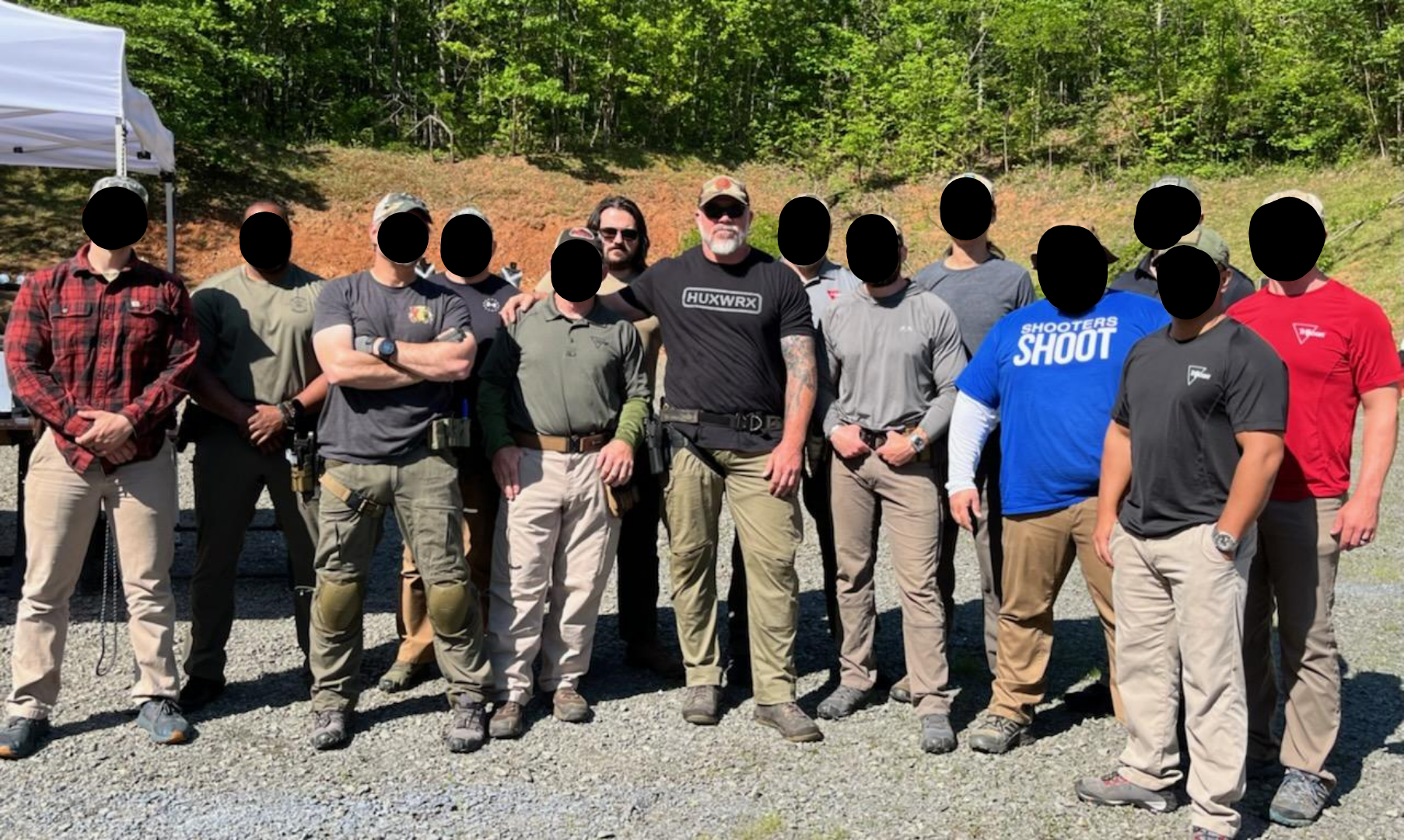
Lose Yourself video? I was in the back!
Superman video? I was in the back!
Then there was the group I belonged to, the actual shooters Trijicon wanted feedback from. I was the only person from my agency present, and at that, the only patrol cop. Everyone was either .mil or federal LE in some capacity that had cooler jobs than mine. My advantage however was that I came into this as a nerd when it comes to this stuff, in a capacity that goes far beyond my duties and obligations as a police officer; with one foot firmly planted in the professional world, and the other in the commercial market of the firearms industry, this bifocal perspective allowed me to offer twice the feedback from two different perspectives.
My mission wasn’t to be the top shooter on the line; it was to get in the heads of the production managers and grab their attention with an iron grip. I went in there to give everyone else a voice, and it would be heard. I made friends with those two guys real quick, and spent as much time with them and the lead engineers as I could, both to offer my input and to pick their brains to find out why certain decisions had been made with their previous products, to better understand their approach to design and development thereof. I remember at one point asking why the ACOG is such a pain in the ass to zero, what with having to tap the turrets after making adjustments. I don’t remember the answer, and mine is still on a loaner not being used anyway; It didn’t much matter.
After signing NDAs and getting the introductions out of the way, Dan gave us the gist of what we’d be doing in terms of shooting, both during the day and in the dark under night vision; nothing out of the ordinary, really. Our focus would be on the optics and what we liked or didn’t like about each of them. We rotated through the following optics across a battery of tests:
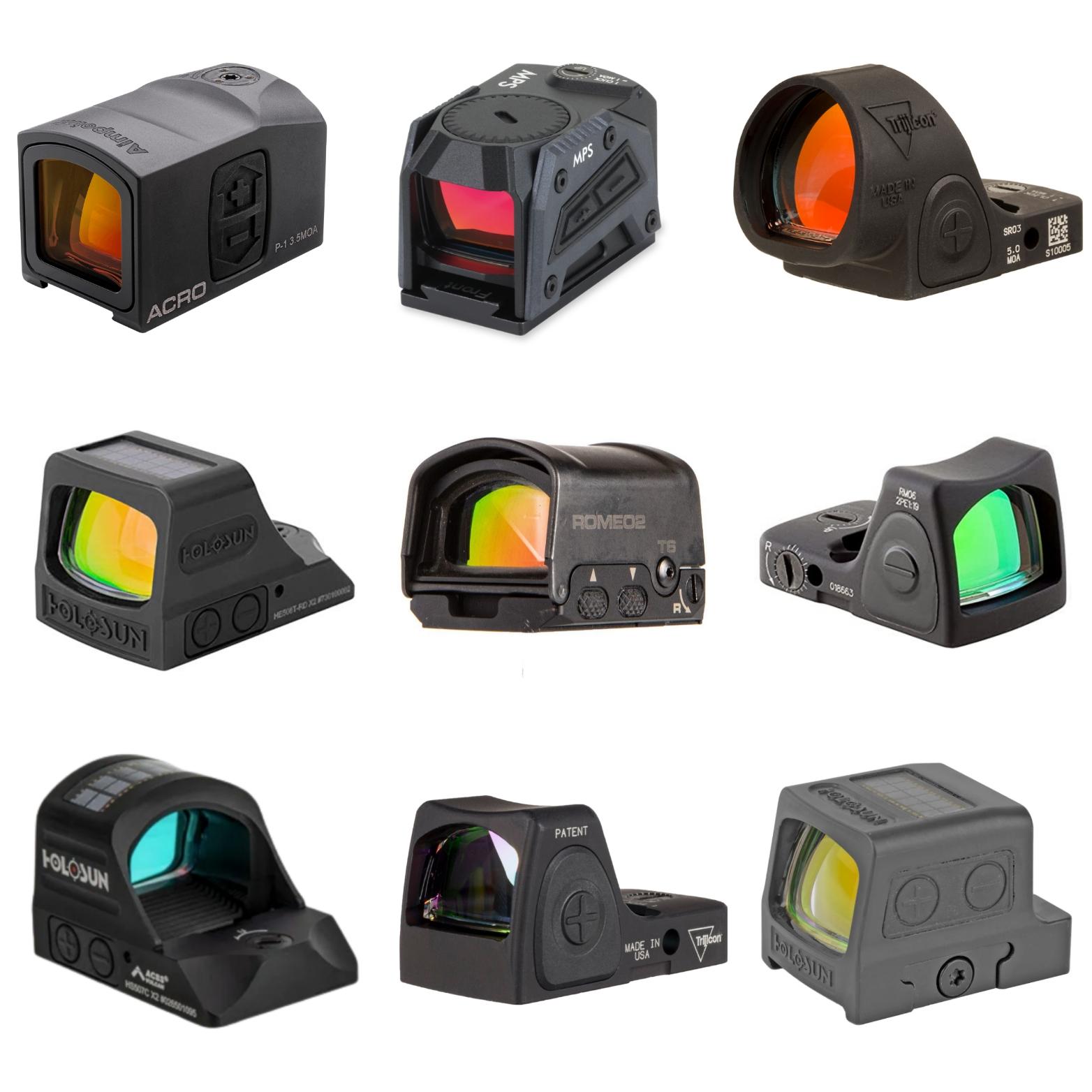
• Aimpoint ACRO P-1
• Holosun 407
• Holosun 507 ACSS
• Holosun 508 Green
• Holosun 509T Red
• Holosun 509T Green
• SIG ROMEO2 T6
• Steiner MPS
• Trijicon RMR Type 2 RM06
• Trijicon RMRcc
• Trijicon SRO
Note that the following feedback was originally written in May of 2022, and has been updated to reflect the time that’s passed and the information that’s been made publicly available since:
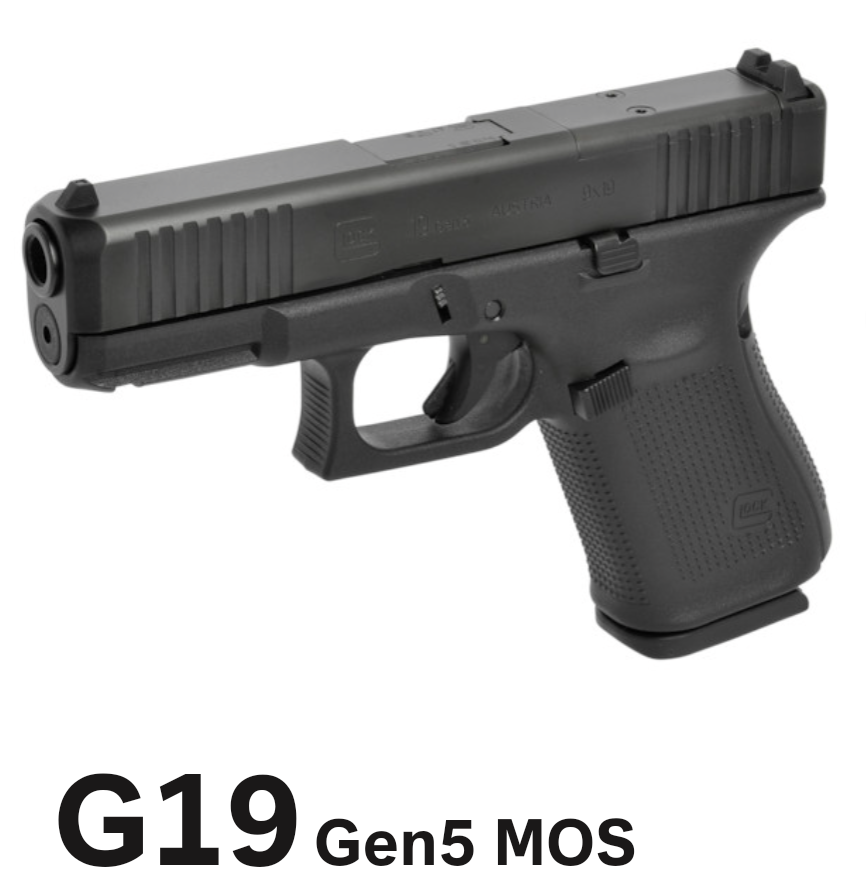
Every optic was mounted to a Gen 5 G19 MOS, so the man/machine interface was consistent throughout. None of the firearms experienced issues.
This wasn’t Brokos teaching us to do anything, he was just telling us what to do with each gun: Zeroing the optics and paying attention to the adjustments’ tactile/audibility, Five rounds with each optic, 2 or 4 controlled pairs with each optic, target transitions, rounds on the B-8 from 5 to 20 yards, and rounds on steel at 50 yards.
We shot plate racks for time and did various relays involving VTAC barricades to run a combination of all the previous things we tested under stress. We looked at how the dots performed under low light with controlled pairs, and again with the WML in play to see the effect on the reticle and whether or not they would wash out. We checked parallax. Finally, we submerged each optic underwater to see if and how they would be affected by the presence of moisture.
Throughout the duration of the shooting portions of the trip, the engineers would follow us around with clipboards, writing notes as we talked about features we liked or disliked, and helping guys through whatever technical issues they were having. These were some of my own takeaways that I wrote down after the fact:
The ACRO, MPS, SRO were the three most highly regarded optics across the entire battery of testing, throughout the group of shooters.
The closed emitter optics were found to have the best/fastest/easiest reticle acquisition compared to the open emitter optics, with the exception being the SRO. We attributed it to looking through a tube like a scope, where misalignment of the optic upon presentation was automatically detectable because of the “scope shadow”-like effect if the optic was off axis.
Things like grip, draw/presentation and trigger pull matter more than the optic, reticle, reticle color, or window size (Note: The larger the window, the sloppier your grip and draw are permitted to be. I said what I said). There were a few moments coming off of different drills I shot where I didn’t do as good as I’m normally capable of otherwise that I came away from thinking, “The optic had nothing to do with that, I fucked that up.” Either my grip was off, or my draw was fucked up, basically the human element basically played more into success or failure. Most of my misses, I attributed to going too fast before getting a proper grip.
People notice a lot of things about optics when they’re just playing with them in the shop or during dry fire that really doesn’t matter or make a difference during live fire under stress for time. Things I noticed before upon initial inspection didn’t even occur to me during certain drills.
I’m led to believe therefore that my previous observation was correct: Most people that come up with shit to complain and nitpick about when it comes to these things, tend to spend more time thinking and talking about them than actually doing and using these products as they were intended to be. As it’s written in my notes from that day, “Why are guys paying attention to the optic body instead of being target focused?”
That being said, even with proper form and target focus, there were some constants that stood out as better, or worse. For instance:
Color changing reticles: Nobody really cared, from what I could tell. I know what the relationship between the eyeball and the color green is, the green reticles didn’t seem any easier to my eye to pick up compared to the red ones. Knowing why green LEDs cost more to make and therefore buy, I wouldn’t pay that extra price.
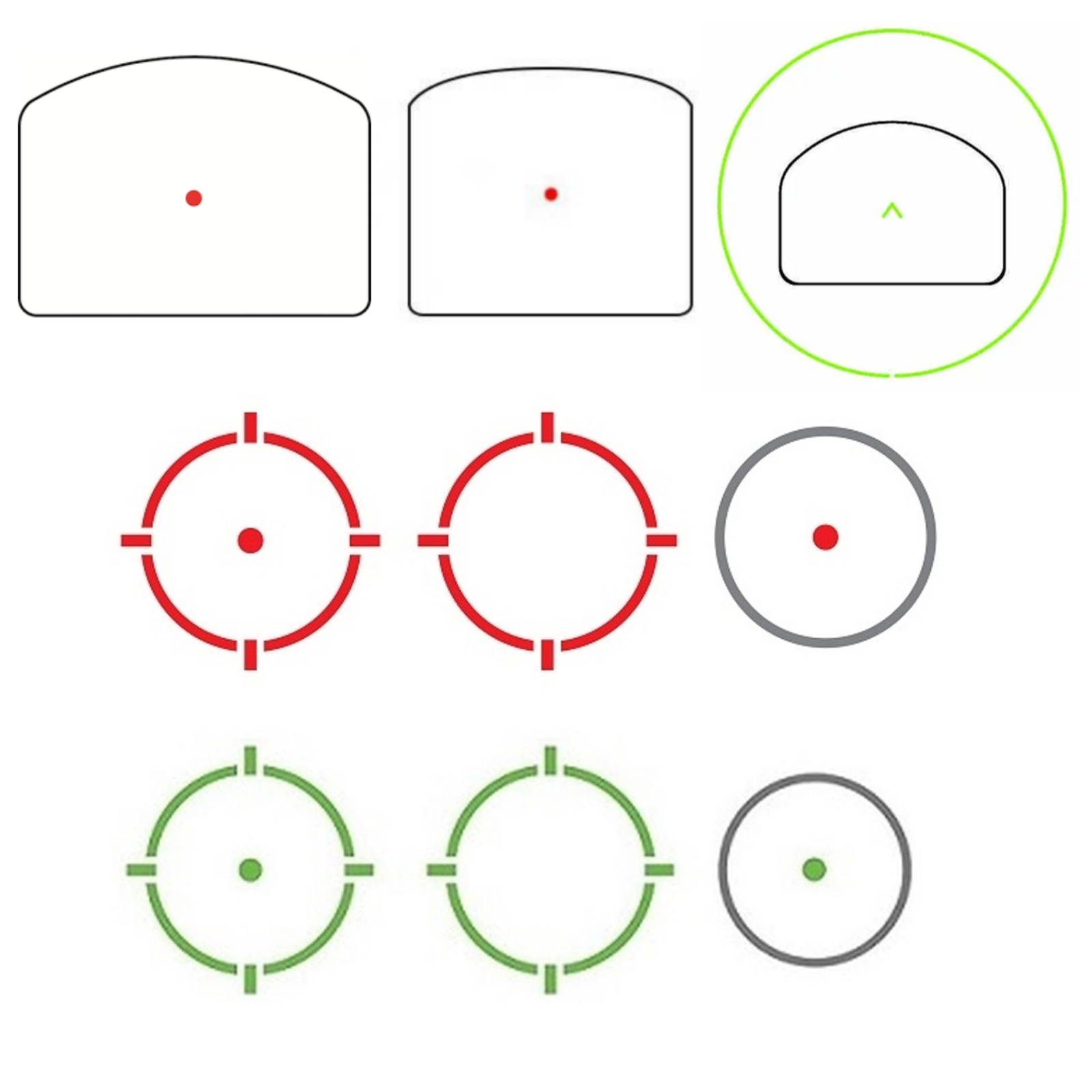
Reticles in general: I don’t like them in pistol optics, no matter what color they are. The EOtech reticles are cool on a rifle, and if you shoot B8s from 25 yards all day I suppose I can see the appeal, but I’ve always found them distracting. From the day I first looked through the Holosun on Chuck’s Lightfighter gun in September 2020 all the way up to today in live fire with several varieties to choose between, the effect is always the same: Upon presentation, my eye goes from target/threat focused to wanting to look at and study the reticle, like “Hey now, what’s all this extra information you’ve presented to me?”, where a dot is simple, easy and fast: Line it up over the target and when it’s where I want it, pull the trigger.
With a reticle, there’s always an extra moment where I’m making sure it’s properly aligned over the target because there’s more of it covering the target. Under speed/timed drills? Even during perfect plate rack runs with no misses (best runs with a 5 second time hack were 3:55 with the ACRO, 3:30 & 3:40 with the MPS, 3:76 with the 509T Green EOtech reticle, and 3:80 with the 509T Red EOtech reticle), it felt like I got lucky when using the reticle and speed mattered more than precision, making my best guess as the shaped blur was moving over the plate as to whether it was aligned properly.
I don’t hate the EOtech reticle in rifle optics. They’re more stable to shoot. With a pistol, I’m already paying attention to my grip and draw and trigger pull. The reticles always felt like they complicated the process by adding more information to pay attention to. The only time I found the reticles helpful was at 50 yards during slow fire, using the EOtech reticles to bracket the target, which still took an extra moment. Ultimately, I prefer the simplicity of a red dot.
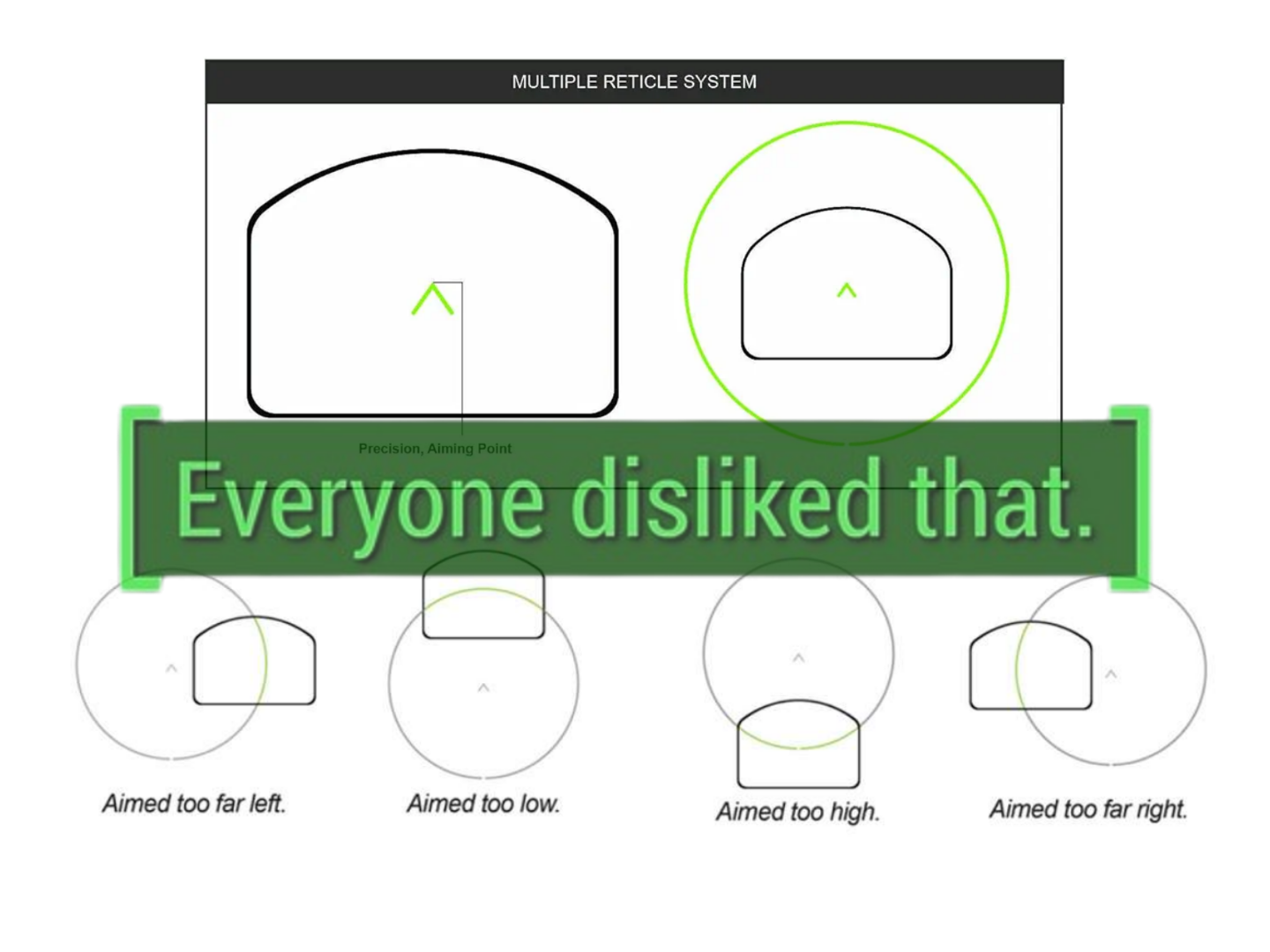
Having said that, everybody– EVERYBODY, fucking HATED the ACSS chevron circle reticle joint in the one Holosun. At first I was like “Oh it kinda looks like an ACOG,” but during strings of fire it was like, fuck that thing. Nobody liked it. I get that the big circle inside the reticle is something of a crutch to help obtain proper alignment. We all just found it extremely annoying and distracting and it became the butt of jokes during the survey. The only time I found it remotely appreciable was under NV, but it came with a noticeable ghost image within the aperture so it wasn’t without flaw.
In the instances where the dot washed out under the brightness of the WML, having those irons there visible through the optic to default to (regardless of height) was very helpful. Without them, or if they weren’t visible through the optic, it was a matter of bracketing the target with the body of the optic and hoping for the best.
My notes from the water submersion testing are as follows:
RMR fogged, wiped both lenses to see dot.
MPS fogged, dot was bright enough to see right through the condensation and overlay on target.
Holosun 509T Red, lenses fogged, reticle visible through fog
Holosun 508 Green, reticle visible through fog, partially visible through water droplets after firing.
SRO, lenses fogged, pin sized dot visible, not actual dot, first shots missed, after first two shots, dot split in two, both dots moved closer together after successive firing as water was shaken off the optic from slide recoil upon determining which dot was the actual dot.
Holosun 507 ACSS, had to wipe lenses to see reticle. Shot fine after.
Holosun 407, dot split into 3, guessed which dot to aim with and made 5 consecutive hits.
I paid more attention to the open emitter checks since those are the only ones that were really in danger from moisture. I didn’t even try the ACRO because the closed emitters were all the same: they were only going to fog at the worst but were otherwise usable.
In short: The open emitter stuff was fucked if too much water got on or in it. Shooting them would shake the water off for the most part, but it wasn’t always “problem solved” from that point.
The SIG ROMEO2 T6, one guy was using it throughout the submersion testing to see just how water tight that truck cap thing’s seal was, I didn’t hear what his findings were. But I wouldn’t be surprised if it was susceptible to condensation or internal fogging when the air temp inside the cap wasn’t the same on the outside, or if moisture got trapped inside once the cap was installed.
Consensus regarding solar and shake awake was unanimous: With battery life measured in YEARS via the 2032, nobody cared. These are gimmicks, not features.
All that being said, it’s no secret that I vehemently hate anything that comes from Holosun, but that was an informed opinion before I actually had any experience shooting them. After the fact, my findings were as follows:
I tried to approach this with an open mind in spite of my bias. I tried to find redeemable qualities in these optics. When I tried to see through the eyes of Holosun fans, I found that I was blind.
Let me put it this way; the Holosun fanboys and apologists are Ralph Wiggum: You’re in danger. Because before, I was convinced you were high. Now I know exactly what crack you’re smoking, and holy shit guys. That low price tag must be pulling double duty as rose tinted glasses, making it easy for you to talk yourself into overlooking flaws and making positive remarks.
None of their reticles were crisp. They were all blurry, or blooming, or weak. All the reticles were canted, confirmed by multiple shooters on site. And the glass was the worst; the distortion and warping of the sight picture served as a noticeable distraction throughout the survey. Nobody came away from it thinking “You know, I think I wanna buy one of these.”
“But muh astigmatism”– okay, sure man, I can’t speak to that since I don’t have astigmatism, you’ve got yourself something of a handicap I guess. The rest of you whores, I’d honestly have more respect for you if you just said “It’s a cheaper item and more cost effective to purchase,” without the rest of the apologist bullshit, and just called a spade a spade. Otherwise, even more now than it ever had seemed so before, it looks as though it’s all more a matter of defending your purchases and where you know your money’s gone in the process.
Suffice it to say, I was certainly less than impressed with what all the chicoms have to offer, and more than ever do I believe, you get what you pay for. I haven’t recanted my opinion that the most unapologetic and rabid defenders of Holosun in the US market are traitors in a manner of speaking/from a certain point of view, but that’s another topic for another time.
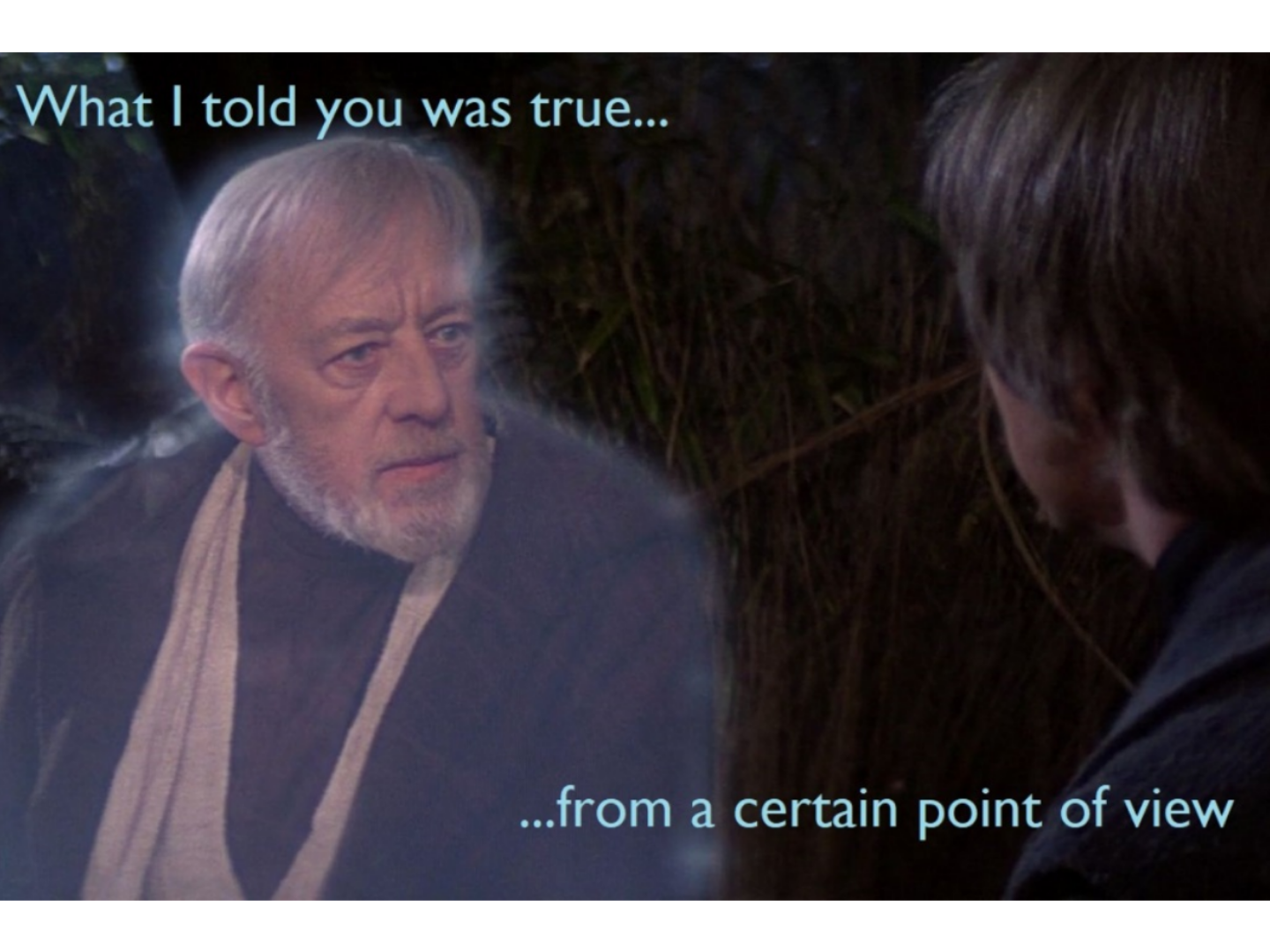
Regarding MRDS overall, I’ve always been a closed emitter guy, having waited for Aimpoint to get in the game with the ACRO before I jumped into the pistol dot game. I don’t see that changing. That being said, I don’t mind the RMR, even despite the tint and slight magnification of the glass. In live fire, I didn’t even notice that. The SRO and the MPS were like looking through big screen TVs. I’d seen the SRO before, but the MPS was pretty cool seeing in person for the first time. The only weird thing about it was the big fat black rectangle in your sight picture pursuant to the battery compartment being on top of the optic. I prefer the battery compartment on the side like the ACRO, but like I said before, if you’re shooting and target focused you don’t notice the housing unless you’re looking for it.
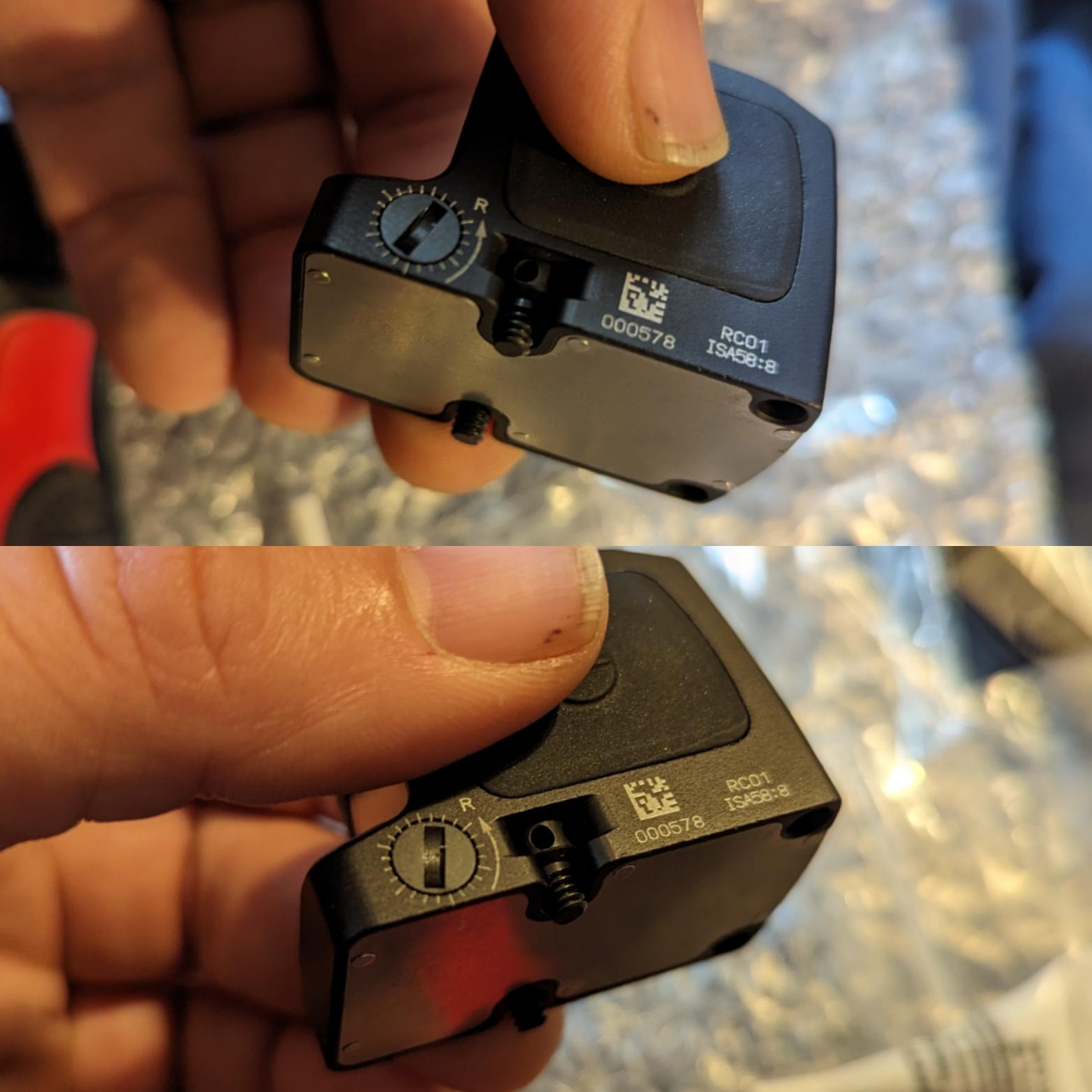
So, going back to the subject of the RCR itself… At the very end of this trial, we were presented with a working prototype of the RMR-HD attached to one of the Gen 5 MOS Glock 19s to pass among us and try out while shooting steel. Apparently this was the fruit of a previous T&E session just like this one, that some of the participants in my group had also been a part of. They pointed out the forward facing light sensor and the built in BUIS on top of the optic housing, and demonstrated the reticle changing features.
I thought the RMR-HD was interesting and wished they’d gotten it to market sooner (I’ll delve deeper into this later), and saw it as a commendable effort on Trijicon’s part to respond to market demands for features seen in newer alternative products. However, it didn’t escape me that if it was priced as American made products typically are compared to Chinese knock-offs, the budget ballers would balk all the same. And they have.
This is where things became interesting. Having shown us the RMR-HD, the program managers from Trijicon said they had another surprise in store for us, and ultimately the purpose of why we were here. Seven (7) Gen 5 MOS G19s were laid out across three tables, along with a survey and a pen. We were instructed to proceed to the tables, read the instructions, and write down our findings, without talking to each other. In hindsight, it’s apparent now that Trijicon wanted to see if we could figure out how to navigate the installation procedure that would be used for the RCR with the capstan screws, without getting any help or coaching from the Trijicon employees directly.
So by the time I actually got my RCR a year ago, it was the second time I’d ever installed one, having had practice here a little over a year prior. The difference was, this time there was no functional prototype (not a torquing card). At each station there were just 3D printed samples of the outer chassis of the optic, with an informational packet next to each one explaining what was unique about them. Our instructions were, upon installing them to the pistols initially, to then rate each permutation prototype for what we liked or didn’t like about them. We would only get to install the first samples we encountered, after which point we would just rotate through the samples and evaluate them for their differences.
Some of the samples were really well thought out, others were… decidedly not. All of my feedback was written through the eyes of the consumer on the commercial side, with the back end professional knowledge of how the R&D and production machine worked, weighed against market feedback. Off the top of my head, I can remember:
• One had a large window and a side loading battery with smaller buttons for brightness and dimming on the side of the optic. In form factor it was just a box, not unlike the ACRO, where the windage and elevation adjustments were contained within said box. This was my favorite, personally. I told them that if they combined this with the backup iron sight like what ended up on the RMR-HD, they’d have gold in their hands. There was a concern on their part about gross or fine motor skills relative to button size, which I’ll address in a minute.
• One pretty much resembled the form factor of the RCR as it currently exists today in production, but I don’t remember whether or not the buttons were different. It wasn’t terrible, I just felt like the side loading battery compartment on the previous version left more window space, and I was used to that form factor from the ACRO P-1 & P-2.
• One had a battery tray that rescinded into the body of the optic like an older CD drive, and was meant for a smaller battery with a shorter battery life. I was very aggressive in my notes telling them to avoid this version unless they wanted to hear all the same complaints Aimpoint did about the ACRO P-1’s short(er) battery life relative to the RMR.
• One version utilized the same method of battery changing as the RMR whereby one would have to remove the optic entirely from the slide to access the battery compartment underneath the optic. Only this time, you could stack two CR123s on top of each other for twice the battery life! Yeah, fuckouttahere 🙄 I was extremely aggressive in telling them to stay far away from any sort of battery method that even resembled that of the RMR and to regard such a thing as tantamount to touching the third rail, as I knew they would never hear the end of it on social media if they were to do such a thing and completely ignore the largest complaint people had about the RMR.
• If I’m recalling correctly, there were two weird versions shaped more like an RMR-HD with an enclosed emitter and window area, or something along those lines where there was a forward hanging edge coming off the front of the optic not unlike the RMR-HD and SRO. It was funky, in a bad way. I told them to stay away from these designs also, it was just needlessly clunky. I think these had the buttons on both sides of the optic as the current RCR does.
So after we installed and shot with these (right through the empty interior, as one does with a hasty sight picture through the body of the optic less the dot) we offered more feedback based on initial impressions. I suggested they call it the Trijicon CEO, for Closed Emitter Optic, but also as a pun on Chief Executive Officer; the advertising slogan wrote itself: “The Executive Decision.”
The two program managers were like “Ooh that’s good, actually,” and I’m told that name made it all the way to the prototype/R&D filing paperwork. Unfortunately, Marketing overruled the idea and chose to go with RCR for its familiarity to RMR, and associative branding. It was a lame move on their part, but it was out of my hands.
I don’t know how much of my input made it to the final product; for instance, I later learned that the RCR’s left and right brightness buttons ended up that way basically because it was the easiest for Trijicon to implement using existing infrastructure and design components that carried over from the RMR and RMR-HD, which automatically meant side loading battery models were ruled out. But other features I said to avoid didn’t make it to the final production so, who knows. Maybe.
However, while I was there I made sure my input was the last thing they heard before we all said goodbye and parted ways, and I was very forward about it, that it would stay fresh in their heads. The reason for this was cause some of the other consultants there were coming up with… pretty fucking dumb nitpicks and requests. No disrespect to them, like I said they have cooler jobs than me, but the knuckle dragger/”I’m not a gun nerd I just use the things” vibe was strong among this lot.
I remember thinking, as I sat there listening to their suggestions, “Jesus Christ, no wonder you guys (Trijicon) keep stepping shit if you’re only ever listening to guys like this with suggestions like that.” Between that, and the apparent inclination to play it safe by oversimplifying and/or little deviation from established products was what made me realize, “This is how you guys get people saying you don’t innovate, it’s like you don’t want to take the risk.”
I don’t know how much of that is due to the marketing team at Trijicon usurping control of product development, but that shouldn’t be a thing. No marketing team should dictate how a product is designed, ever. Their job is to sell that which is developed based on end user need, request, and feedback. Not to tell R&D how to design something based on what they feel like marketing to the consumers. In retrospect, I would personally wager that most of Trijicon’s “mistakes” in the eyes of the commercial market started right there, with the cart being put before the horse in the development process.
With that in mind, as I was heading back home, I had other ideas and suggestions I made to the program managers via text once they occurred to me while I was driving. These are taken straight from my notes, but edited for context:
• Regarding button size, don’t get caught up in gross/fine motor skills. This is largely debunked by the fact that you can facilitate mag changes and pulling the trigger under stress, where gross motor skills are whole limb movements.
• Simplicity is good, but don’t oversimplify things if it means forsaking optimal innovations; this can be interpreted as laziness and a failure to exercise forward thinking in your design approach. People asked for a new thing; give it to them. They will get used to it. Should they have growing pains, they won’t be able to say you failed to deliver.
• I realized some of the 3D printed prototypes, #6 and 7 maybe, used a very similar body style to the RMR-HD; I can’t stress this enough in support of Sample #1 and its body style: DO NOT DO NOT DO NOT succumb to the temptation of using that RMR-HD-like chassis for the closed emitter optic to streamline the production line. This new product deserves to be its own thing, rather than an offshoot of something else, where corners were cut and durability was sacrificed for faster or cheaper production. Do it right the first time.
• The innovations that are seen in Military & LE small arms are sometimes inspired directly by those that start in the commercial sector. We’ve seen a lot of things from the competition world end up on duty rifles, such as LPVOs and RDS optics on pistols. We often acknowledge how common it is for firearms and gear options available in the commercial market to be better or more advanced or modernized compared to standard issue duty equipment on the LE & Mil side.
TO THE POINT: Don’t be afraid to lean on that. If the result is your producing a better product for LE & Mil applications that took cues from the commercial tech capabilities, you’ll be ahead of the curve coming out of the gate, instead of having to catch up later on down the road.
• Sample #1 had the best field of view, durability rating, and battery life, weighed against battery change and optic attachment method. I promise you, the side battery compartment wasn’t noticeable under strings of fire versus just looking at the thing up close and toying with it.
• Speaking also as an armed professional, I must say I was reminded of the fact that the Military & LE aren’t professions requiring MENSA candidates at the entry level, but rather, the intelligence and brawn of a caveman. Which is to say, some of the other guys shooting and offering feedback came up with quips and nitpicks about things that had me thinking “How the hell did you even notice or think to complain about that? Who cares?”
Don’t put TOO MUCH weight into the superfluous feedback you got. I think this is the first time you had someone like me present who has one foot firmly planted in both the professional and consumer markets, to be able to see the product through both sets of eyes. Both markets require the same thing at the end of the day: a product they can trust their lives to in a worst case scenario, be it on deployment or under “shit hit the fan” circumstances at home.
• Button layout suggestion: On the same side, up or forward to turn up the brightness, and down or backward to dim the brightness makes sense intuitively. On two different sides, left or right for up or down doesn’t immediately correlate.
This is where the story ends. I didn’t run into the Trijicon guys again until SHOT Show 2023; this time the company had chosen to attend. All the guys I’d met from Trijicon (save for one, who switched to another company) were there, so when I walked up to their booth and gave ‘em that “What’s new?” nod, they recognized me and immediately knew why I was there.
They took me into a private room and showed me the final production versions of both the RCR and RMR-HD, mounted to inert pistols. I was surprised; it had been explained to me back in Virginia months earlier that it takes about two years for Trijicon to get a product from concept to market. This time around, they chose to “fast track” the new wares to get them out sooner. Eight months later, when they were officially announced to the world, I was sent an RCR as a thank you for my participation and support.
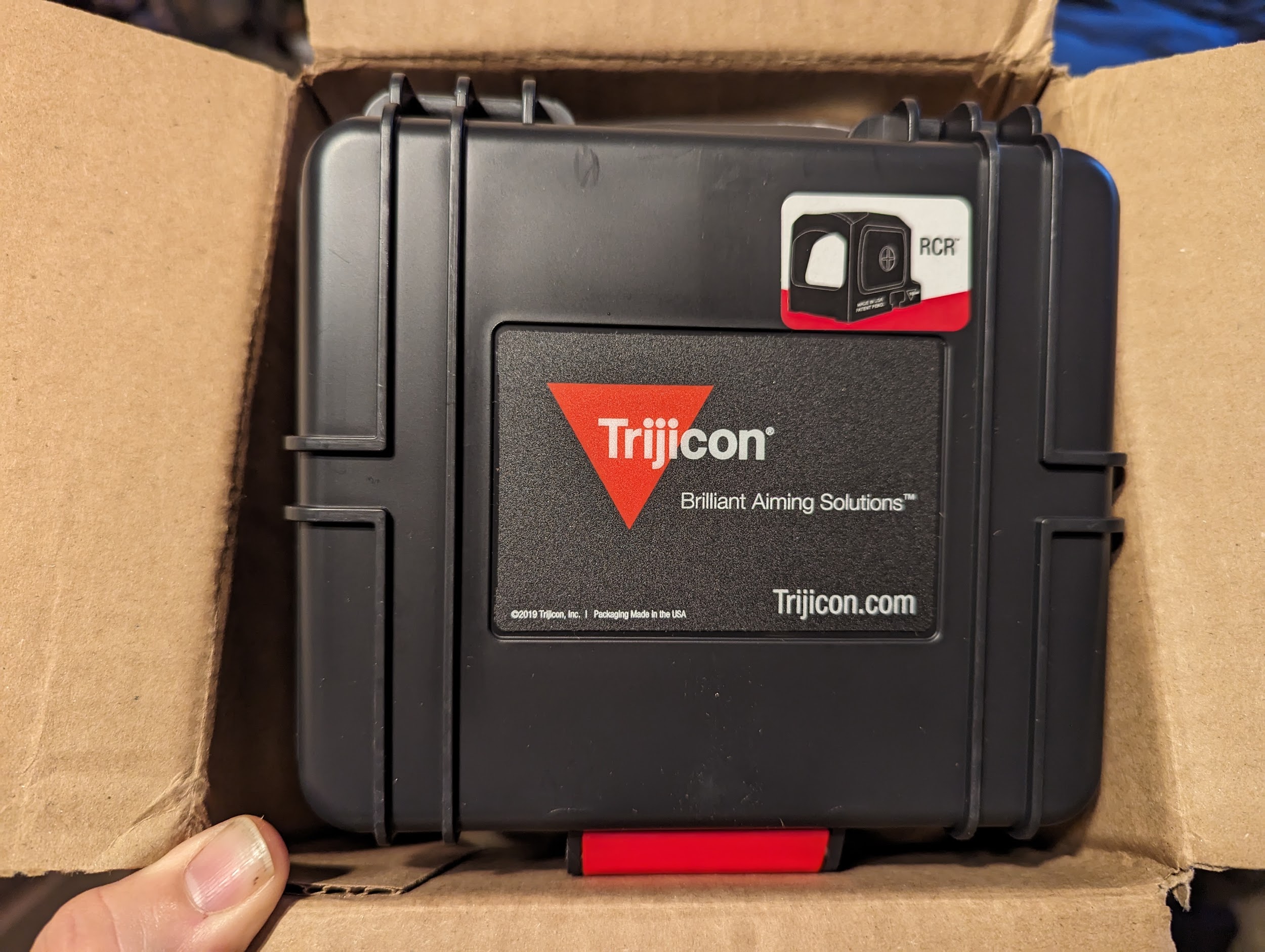
So that’s how I ended up with my RCR, and the part I played in its development. When I first posted about it, some of the wannabe voice of the people-type low level “content developers” out in the aether took it upon themselves to assume I was taking more credit than that, and purported that I claimed Trijicon had reached out to me personally for product development input.
Well… no, dipshits. While that has happened otherwise elsewhere, it wasn’t the case here. That’s not what I said, and that’s not what happened. And you didn’t even bother to ask, cause you’re a bunch of bitches. Don’t act like one if you don’t like hearing it.
Moral of the story: I’m approachable, and I’ve got no reservations about disclosing details not otherwise restricted by NDA. If I drop a hot take that catches your attention, focus on that and don’t make it about something else. But if you’re wondering, come at me like someone with a spine and feel free to ask. We’ll talk like men and figure out what your problem is.
I respect the up front approach, and you might actually learn something from the encounter. Failing that, I’m left to conclude that you’re neither prepared or equipped to debate someone who has substantiated their informed opinion; drive-by commentary and disinformation are the most you’re able to waste anyone’s time with, lacking the fortitude or any points worth considering otherwise.
Stay Dangerous
Stay in this L.A.N.E.


